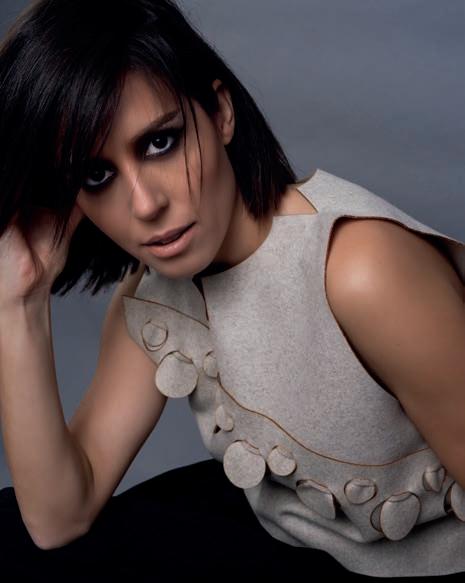
5 minute read
Montenegro’s eco-fashion
from Luštica Bay LIFE
by Lustica Bay

HITS THE GLOBAL FASHION SCENE
Advertisement
Eco-Fashion is on the rise in the global fashion scene and the words ‘sustainable’, ‘eco’ and ‘environmentally friendly’ are on everyone’s lips. But what does it really mean? Luštica Bay magazine was fortunate to hook up with fashion brand AKKA’S Aleksandra Džaković who is the Montenegrin ambassador of ecofashion. We got an insight into what eco fashion involves and how she is making her mark on the international fashion scene.
WHAT’S ECO FASHION?
It’s a startling fact, but ‘fast fashion’, cheap clothes that are easily thrown as trends change, is responsible for a shocking 4 -10% of greenhouse emissions a year. To put this into perspective that is more emissions than the whole of the aviation and shipping industry put together. What is more, 85% of all textiles go to the dump and many garments deposit harmful microplastics into the ocean.
Just buying clothes that are conveniently labelled with the word ‘sustainable’ just won’t cut it. It needs more than this and this is where designers like Aleksandra are really making the difference as fashion brand AKKA takes strident steps as Montenegro’s first eco-brand on the global fashion stage.
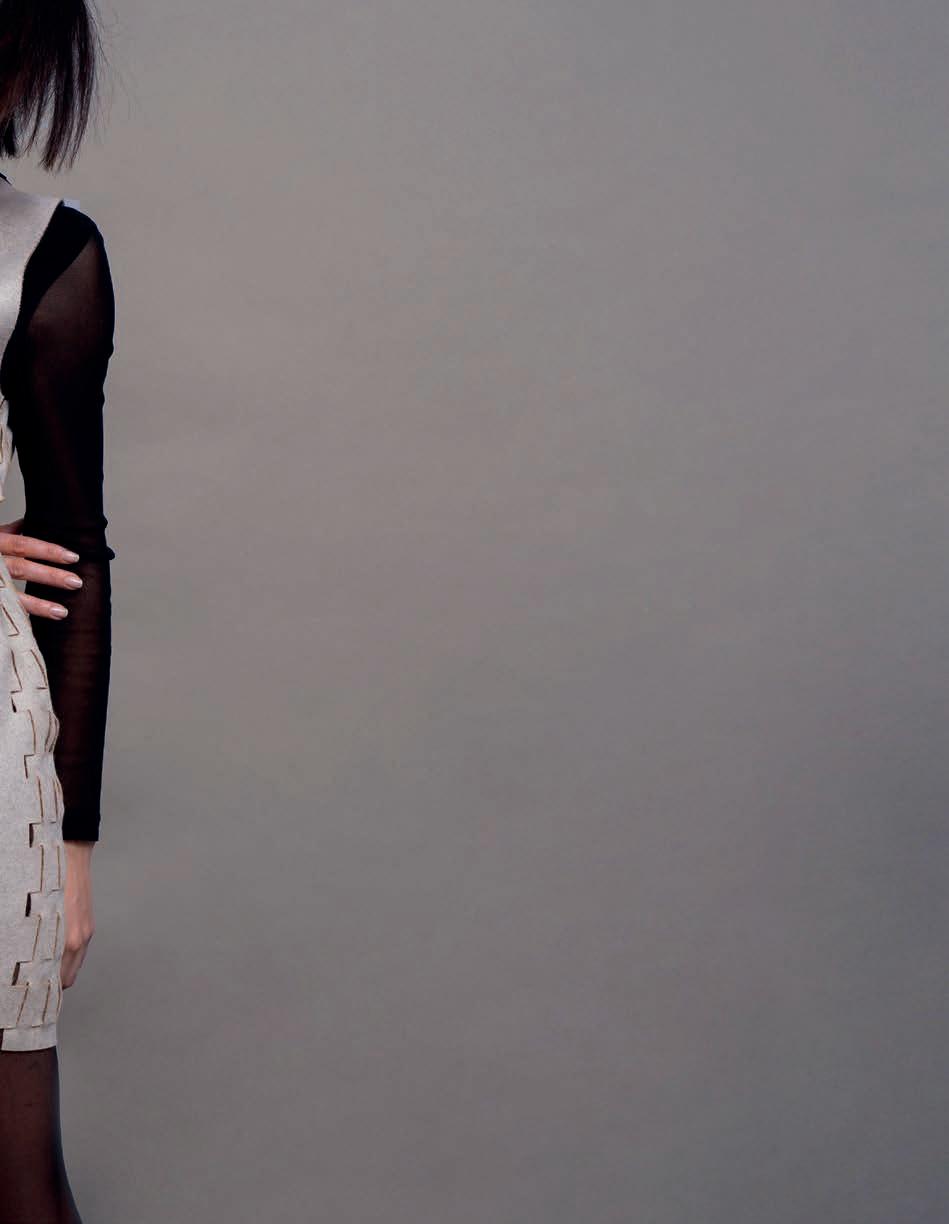
With a background in architecture from the Bauhaus in Germany, Aleksandra was keen to transfer some architectural sustainability concepts to the world of fashion and she sees eco fashion as a movement that is moving away from the perils of exploitative, unethical, and unsustainable practices. She is acutely aware that many try to play on this as they try to add it to the conventional fast fashion concept. “I see this as a clear case of “greenwashing” or “woke washing” she says candidly. “Fortunately, the number of true sustainable brands are slowly increasing, so at some point it will become a norm and I am keen to champion this,” she adds enthusiastically.
Eco, or sustainable fashion focuses on carefully sourced fabrics, production on demand and eventual reuse of wasted material. Aleksandra explains how the choice of fabric is of great importance – “This means I always use biodegradable materials which are either biosynthesized or natural” she says. There is good reason for this, when we look at research, an average cotton t-shirt might release 2 kg of carbon dioxide into the atmosphere whilst a polyester dress would release the equivalent of 17kg of carbon dioxide. Also, when sourcing fabrics, producers in close geographical proximity are chosen in order to reduce the environmental costs of transport and to support good working conditions further down the supply chain. By choosing quality materials, garments are designed to last for more than one season. Describing her process, Aleksandra says “My first prototypes are made from pinatex, which is a biodegradable material made of pineapple leaves and is a by-product of the food industry. Then local inspiration plays its part in the aesthetics and expression.”
Aleksandra sees the practice of sewing as an outdated method and instead uses advanced machines which reduce exhausting manual labor and produce garments on demand. This way, the risk of piling up the stocks and having to waste them at the end of season is eliminated.
Explaining the method, she says “Patterns are made in software designed for laser cutting or 3D printing. As no sewing is needed, seams are made as joints, so the elements are later manually assembled into a garment. These joints allow for modularity of design. The great thing is that modular garments can be assembled and reassembled, which ensures we won’t discard them as soon as one part is damaged.”
A key advantage of this process is that the fashion brand can replace parts and re-make them locally, thus reassembling garments over and over again, making them last much longer. In addition, digital patterns can be easily downloaded anywhere and printed out or laser cut at the nearest MakerSpace or FabLab. “Ultimately, this means no transportation, no CO2 emission and no packaging,” concludes Aleksandra.

SHARING MONTENEGRIN CULTURE WITH THE WORLD
Aleksandra was delighted to take AKKA’s eco designs to London Fashion Week. Talking about the value of international shows she says, “International shows are exciting because they are an amazing melting pot of concepts, stories and perspectives.”
When she went to London Fashion Week, Aleksandra wanted to focus on a coherent theme, so she concentrated on a futuristic interpretation of Montenegro’s folk costume. Entitled ‘Archaic Future’ this was a bold locally inspired fashion statement which became winner of BigSEE Fashion Design Award 2021.
Talking about the big idea behind her concept, Aleksandra explains her rationale,
“Montenegrin costume is, above all, an advocate of freedom, a symbol of defiance, homogeneity and dignity. Despite our need for individual expression, we still witness a great impact of conformist consumerism. I wanted to transpose the elements of our costume and give them a modern expression. In some cases, it was a pattern, in others an ornament or colour.” Using modified block patterns, costumes were made from one single material which was laser cut without sewing and manually assembled. The result was a strident, modern and architectural take on Montenegrin costume that turned heads. “My first prototypes are
food industry. ”
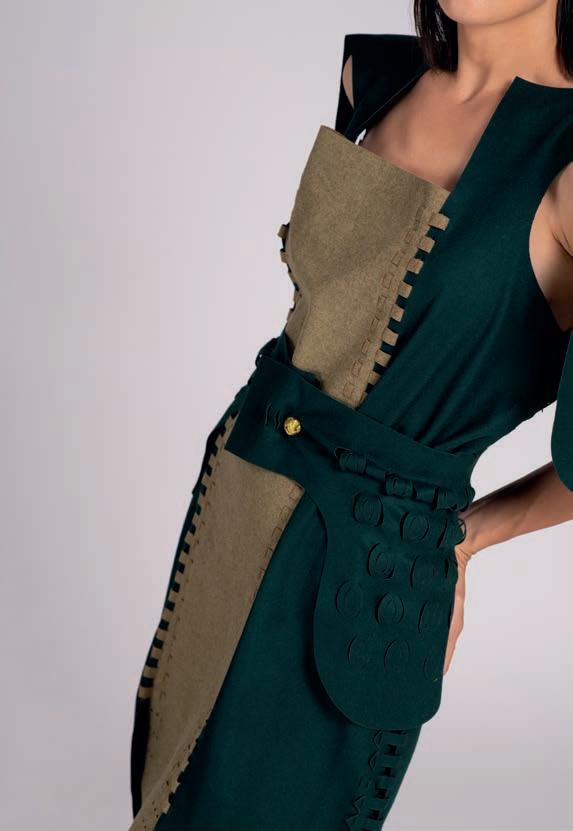
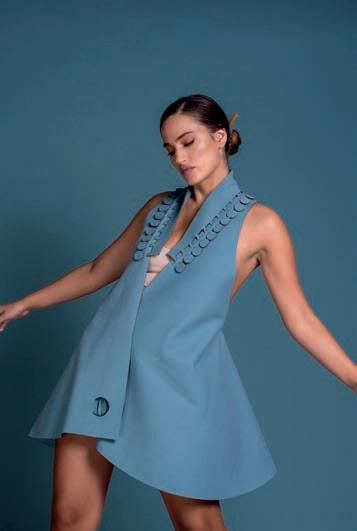
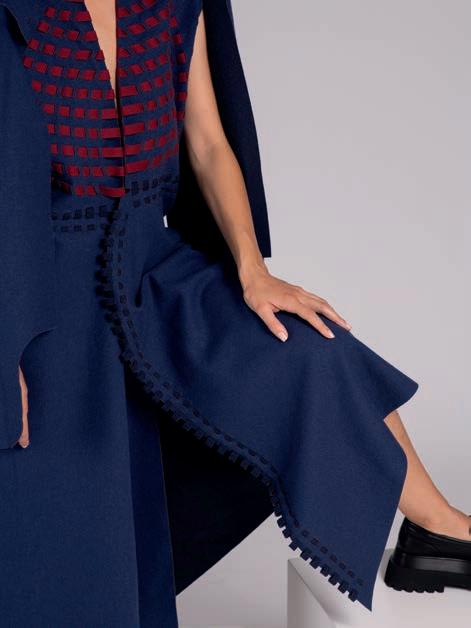
LEADING THE WAY TO THE FUTURE OF FASHION
AKKA is already building up a loyal following. Individuals from the world of art and architecture are drawn to its unique aesthetic which effortlessly brings together sustainability and modern shapes.
The brand is innovative as it approaches fashion as a product design. Using architectural logic, it employs construction methods which embrace technology using biosynthetic, biodegradable materials.
Montenegrins also recognise and applaud the details in the work and appreciate how the traditional can be interpreted in a futuristic and exciting way. Aleksandra is excited and passionate about the future as she continues to develop her designs and build up an international network “There’s a huge and positive opportunity for the fashion industry to stimulate the way to a sustainable and fair world” she asserts “and I want to be a part of it.”











